 W
WAmazon Adventure is a 1949 children's novel by the Canadian-born American author Willard Price featuring his "Adventure" series characters, Hal and Roger Hunt. It depicts an expedition to the Amazon River to capture animals for their father's wildlife collection business. Initially published by John Day in the US, the UK edition was published two years later by Jonathan Cape.
 W
WAtomsk, first published in 1949, is a Cold War spy novel by "Carmichael Smith", one of several pseudonyms used by Paul Linebarger, who wrote fiction most prolifically as Cordwainer Smith. Written two years after Winston Churchill's Sinews of Peace address, Atomsk is the first espionage novel of the Cold War, inaugurating a genre exemplified by writers such as Ian Fleming and John Le Carré.
 W
WThe Blue Cat of Castle Town is a children's novel by Catherine Coblentz, illustrated by Janice Holland. It tells the story of the kitten born on a blue moon, whose destiny was to bring the song of the river, with its message of how things turn blue, war, and peace, to the inhabitants of Castle Town.
 W
WThe Brave Bulls is a 1949 Western novel written by Tom Lea about the raising of bulls, on the ranch Las Astas, for bullfighting in Mexico.
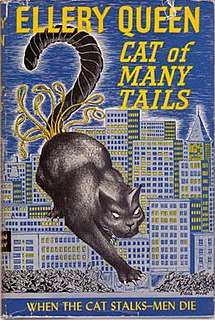 W
WCat of Many Tails is a novel that was published in 1949 by Ellery Queen. It is a mystery novel set in New York City, United States.
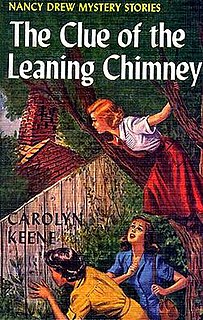 W
WThe Clue of the Leaning Chimney is the twenty-sixth volume in the Nancy Drew Mystery Stories series. It was first published in 1949 under the pseudonym Carolyn Keene. The actual authors were ghostwriters George Waller, Jr. and Harriet Stratemeyer Adams.
 W
WThe Cry and the Covenant is a novel by Morton Thompson written in 1949 and published by Doubleday. The novel is a fictionalized story of Ignaz Semmelweis, an Austrian-Hungarian physician known for his research into puerperal fever and his advances in medical hygiene. The novel includes historical references, and details into Semmelweis' youth and education, as well as his later studies.
 W
WThe Door in the Wall is a 1949 novel by Marguerite de Angeli that received the Newbery Medal for excellence in American children's literature in 1950.
 W
WThe Dream Merchants is an American novel written by Harold Robbins and published in 1949. Set in the early 20th century, the book is a "rags-to-riches" story of a penniless young man who goes to Hollywood and builds a great film studio. A former Universal Studios employee, author Harold Robbins based the main character on Universal's founder, Carl Laemmle. With the Hollywood history in the backdrop, it is a love story.
 W
WEarth Abides is a 1949 American post-apocalyptic science fiction novel by George R. Stewart. The novel tells the story of the fall of civilization from deadly disease and the emergence of a new culture with simpler tools. Set in the 1940s in Berkeley, California, the story is told by Isherwood Williams, who emerges from isolation in the mountains to find almost everyone dead.
 W
WExiles of Time is a science fiction novel by American writer Nelson S. Bond. It was first published in book form in 1949 by Prime Press in an edition of 2,112 copies, of which 112 were signed, numbered and slipcased. The novel first appeared in the magazine Blue Book in May 1940.
 W
WFamily Skeleton is a 1949 comedy mystery novel by the American writer Doris Miles Disney.
 W
WFather of the Bride is a 1949 novel written by Edward Streeter. It was the basis for the 1950 film of the same name starring Spencer Tracy, Joan Bennett, and Elizabeth Taylor.
 W
WThe Fires of Spring (1949) is the second book and first novel published by American author James A. Michener. Usually known for his multi-generational epics of historical fiction, The Fires of Spring was written as a partially autobiographical bildungsroman in which Michener's proxy, young orphan David Harper, searches for meaning and romance in pre-World War II Pennsylvania.
 W
WFreddy Plays Football (1949) is the 16th book in the humorous children's series Freddy the Pig written by American author Walter R. Brooks, and illustrated by Kurt Wiese. In it, Freddy and the Bean animals try to convince the Beans that Mrs. Bean’s long lost brother is a fake. Freddy lands in jail for stealing the money the fake is attempting to take. In the meanwhile Centerboro is taken with football fever on account of Freddy's playing.
 W
WA Graveyard To Let is a mystery novel by the American writer John Dickson Carr, who published it under the name of Carter Dickson. It is a locked room mystery featuring the series detective Sir Henry Merrivale.
 W
WThe Homunculus is a fantasy novel by author David H. Keller, M.D.. It was first published in 1949 by Prime Press in an edition of 2,112 copies of which 112 were slipcased and signed by the author.
 W
WThe Incredible Planet is a science fiction fix-up novel by American author John W. Campbell, Jr.. It was published in 1949 by Fantasy Press in an edition of 3,998 copies. The novel is a collection of three linked novelettes that were not accepted for the magazine Astounding SF. The stories are sequels to Campbell's 1934 novel The Mightiest Machine.
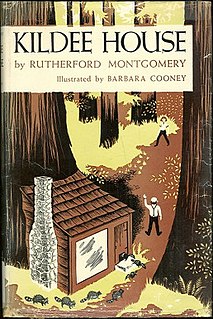 W
WKildee House is a children's novel by Rutherford George Montgomery. It tells the story of a house in a redwood forest which becomes a refuge for wildlife. The novel was first published in 1949 and was a Newbery Honor recipient in 1950. It is illustrated by Barbara Cooney.
 W
WLike Lesser Gods is a 1949 novel by Mari Tomasi about the Italian-American stonecutters of Granitetown, and their dedication to the work despite the danger of silicosis. Originally published by Bruce, a small Catholic press, it was republished by the New England Press in 1988 and 1999.
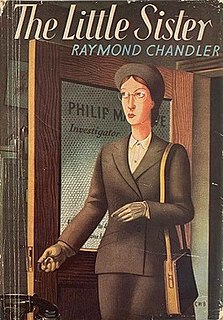 W
WThe Little Sister is a 1949 novel by Raymond Chandler, his fifth featuring the private investigator Philip Marlowe. The story is set in Los Angeles in the late 1940s. The novel centres on the younger sister of a Hollywood starlet and has several scenes involving the film industry. It was partly inspired by Chandler's experience working as a screenwriter in Hollywood and his low opinion of the industry and most of the people in it. The book was first published in the UK in June 1949 and was released in the United States three months later.
 W
WLords of Creation is a science fiction novel by American author Eando Binder. It was first published in book form in 1949 by Prime Press in an edition of 2,112 copies, of which 112 were signed, numbered and slipcased. The novel was originally serialized in six parts in the magazine Argosy beginning September 23, 1939.
 W
WThe Man with the Golden Arm is a novel by Nelson Algren, published by Doubleday in November 1949. One of the seminal novels of post-World War II American letters, The Man with the Golden Arm is widely considered Algren's greatest and most enduring work. It won the National Book Award in 1950.
 W
WThe Moving Target is a 1949 mystery novel by American writer Ross Macdonald, who at this point used the name "John Macdonald" after his father, John Macdonald Millar. It is the first of his books to feature the detective Lew Archer.
 W
WNeedle is a 1950 science fiction novel by American writer Hal Clement, originally published the previous year in Astounding Science Fiction magazine. The book was notable in that it broke new ground in the science fiction field by postulating an alien lifeform, not hostile, which could live within the human body. Also published as From Outer Space, the book would, in 1978, spark the sequel Through the Eye of a Needle.
 W
WNothing More Than Murder is a 1949 crime novel by Jim Thompson.
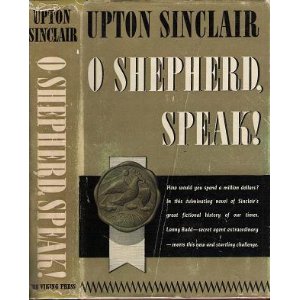 W
WO Shepherd, Speak! is the tenth novel in Upton Sinclair's Lanny Budd series. First published in 1949, the story covers the period from 1945 to 1946.
 W
WThe Oasis is a short satirical novel by the American writer Mary McCarthy, published by Random House in 1949. McCarthy describes this, her second novel, as a "conte philosophique". It tells the story of a group of embattled intellectuals, their quest to establish a Utopian community in the mountains of New England, and their failure to surmount ideological and personal differences for the greater good of the commune. Doubling as a roman à clef, The Oasis borrows heavily from McCarthy's experiences and frustrations with the short lived European-American Group, and serves more broadly as a critique of the “abstract idealism of intellectuals” and their inability to enact actual change.
 W
WThe Paradox Men is a science fiction novel by American writer Charles L. Harness, his first novel. Initially published as a novella, "Flight into Yesterday", in the May 1949 issue of Startling Stories, it was republished as The Paradox Men in 1953. The "science-fiction classic" is both "a tale dominated by space-opera extravagances" and "a severely articulate narrative analysis of the implications of Arnold J. Toynbee's A Study of History." Boucher and McComas described it as "fine swashbuckling adventure ... so infinitely intricate that you may never quite understand what it's about." P. Schuyler Miller described it as "action-entertainment, fast-paced enough that you don't stop to bother with inconsistencies or improbabilities."
 W
WPlace Called Estherville is a novel written by Erskine Caldwell, most famous for his novels Tobacco Road and God's Little Acre. The book was first published in 1949 by Duell, Sloan & Pearce and later published in paperback by Signet Books. It would go on to sell more than 1.5 million copies. The novel centers on a biracial brother and sister, Ganus and Kathyanne Bazemore. After their mother dies, they move to a segregated town called Estherville to help take care of their sick aunt. They face abuse from the town that culminates in tragedy.
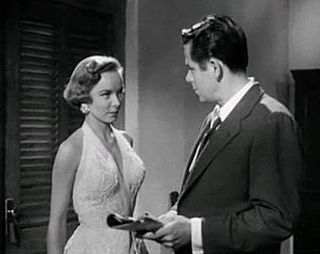 W
WPlunder of the Sun is a 1949 novel by David F. Dodge about a hunt for ancient Peruvian treasure. It was adapted into the November 8, 1949 episode of the radio series Escape and later into the 1953 Film Noir movie of the same name starring Glenn Ford with the location changed to Mexico.
 W
WThe Queen of Zamba is a science fiction novel by American writer L. Sprague de Camp, the first book of his Viagens Interplanetarias series and its subseries of stories set on the fictional planet Krishna. It was written between November 1948 and January 1949 and first published in the magazine Astounding Science Fiction as a two-part serial in the issues for August and September 1949. It was first published in book form as a paperback by Ace Books in 1954 as an "Ace Double" issued back-to-back with Clifford D. Simak's novel Ring Around the Sun. This version was editorially retitled Cosmic Manhunt and introduced a number of textual changes disapproved by the author. The novel was first issued by itself in another paperback edition under the title A Planet Called Krishna, published in England by Compact Books in 1966. A new paperback edition restoring the author's preferred title and text and including the Krishna short story "Perpetual Motion" was published by Dale Books in 1977. This edition was reprinted by Ace Books in 1982 as part of the standard edition of the Krishna novels. The novel has been translated into German, French, Italian, Czech, and Polish. An E-book edition was published by Gollancz's SF Gateway imprint on September 29, 2011 as part of a general release of de Camp's works in electronic form.
 W
WA Rage to Live is a 1949 novel by John O'Hara. it was a bestseller upon release. The novel is described as a large-scale social chronicle, depicting a wide swath of American society, set in the fictional locale of Fort Penn, PA.
 W
WRed Planet is a 1949 science fiction novel by Robert A. Heinlein about students at boarding school on the planet Mars. It represents the first appearance of Heinlein's idealized Martian elder race. The version published in 1949 featured a number of changes forced on Heinlein by Scribner's, since it was published as part of the Heinlein juveniles. After Heinlein's death, the book was reissued by Del Rey Books as the author originally intended.
 W
WThe Screaming Mimi is a mystery novel by pulp writer Fredric Brown. It was first published in 1949 as a Dutton Guilt Edged Mystery. A shorter version of the book appeared in the October, 1949 issue of Mystery Book Magazine.
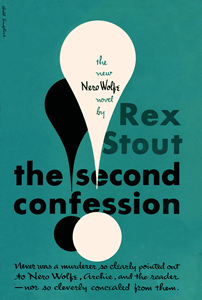 W
WThe Second Confession is a Nero Wolfe detective novel by Rex Stout, first published by the Viking Press in 1949. The story was also collected in other omnibus volumes, including Triple Zeck. This is the second of three Nero Wolfe novels that involve crime boss Arnold Zeck – Wolfe's Professor Moriarty. In this novel he telephones Wolfe to warn him off an investigation and retaliates when Wolfe refuses to cooperate. Though the crime is solved, the ending is left open.
 W
WSeven out of Time is a science fiction novel by American writer Arthur Leo Zagat. It was originally serialized in the magazine Argosy beginning in 1939. It was first published in book form in 1949 by Fantasy Press in an edition of 2,612 copies.
 W
WThe Shaggy Man of Oz (1949) is the thirty-eighth in the series of Oz books created by L. Frank Baum and his successors, and the second and last by Jack Snow. It was illustrated by Frank G. Kramer. The book entered the public domain in the United States when its copyright was not renewed as required.
 W
WShane is a western novel by Jack Schaefer published in 1949. It was initially published in 1946 in three parts in Argosy magazine, and originally titled Rider from Nowhere. The novel has been printed in seventy or more editions, and translated into over 30 languages, and was adapted into the 1953 film starring Alan Ladd.
 W
WThe Sheltering Sky is a 1949 novel of alienation and existential despair by American writer and composer Paul Bowles.
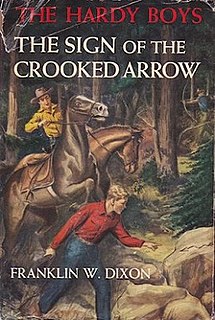 W
WThe Sign of the Crooked Arrow is Volume 28 in the original The Hardy Boys Mystery Stories published by Grosset & Dunlap.
 W
WSilverlock is a novel by John Myers Myers published in 1949. The novel's settings and characters, aside from the protagonist, are all drawn from history, mythology, and other works of literature.
 W
WSixth Column, also known under the title The Day After Tomorrow, is a science fiction novel by American writer Robert A. Heinlein, based on a story by editor John W. Campbell, and set in a United States that has been conquered by the PanAsians, who are asserted to be neither Japanese nor Chinese. Originally published as a serial in Astounding Science Fiction it was published in hardcover in 1949. It is most known for its race-based premise.
 W
WSong of the Pines: A Story of Norwegian Lumbering in Wisconsin is a children's historical novel which was written by the husband and wife team of Walter and Marion Havighurst.
 W
WThe Sword of Rhiannon is a science fantasy novel by American writer Leigh Brackett, set in her usual venue of Mars. A 1942 Brackett story, "The Sorcerer of Rhiannon", also uses the name; however, it is the name of a place rather than a character.
 W
WTree of Freedom is a children's historical novel by Rebecca Caudill. It is a pioneer story set in Kentucky at the time of the American Revolutionary War. The novel, illustrated by Dorothy Morse, was first published in 1949 and was a Newbery Honor recipient in 1950.
 W
WThe Way West is a 1949 western novel by A. B. Guthrie, Jr. The book won the Pulitzer Prize for Fiction in 1950 and became the basis for a film starring Kirk Douglas, Robert Mitchum, and Richard Widmark.